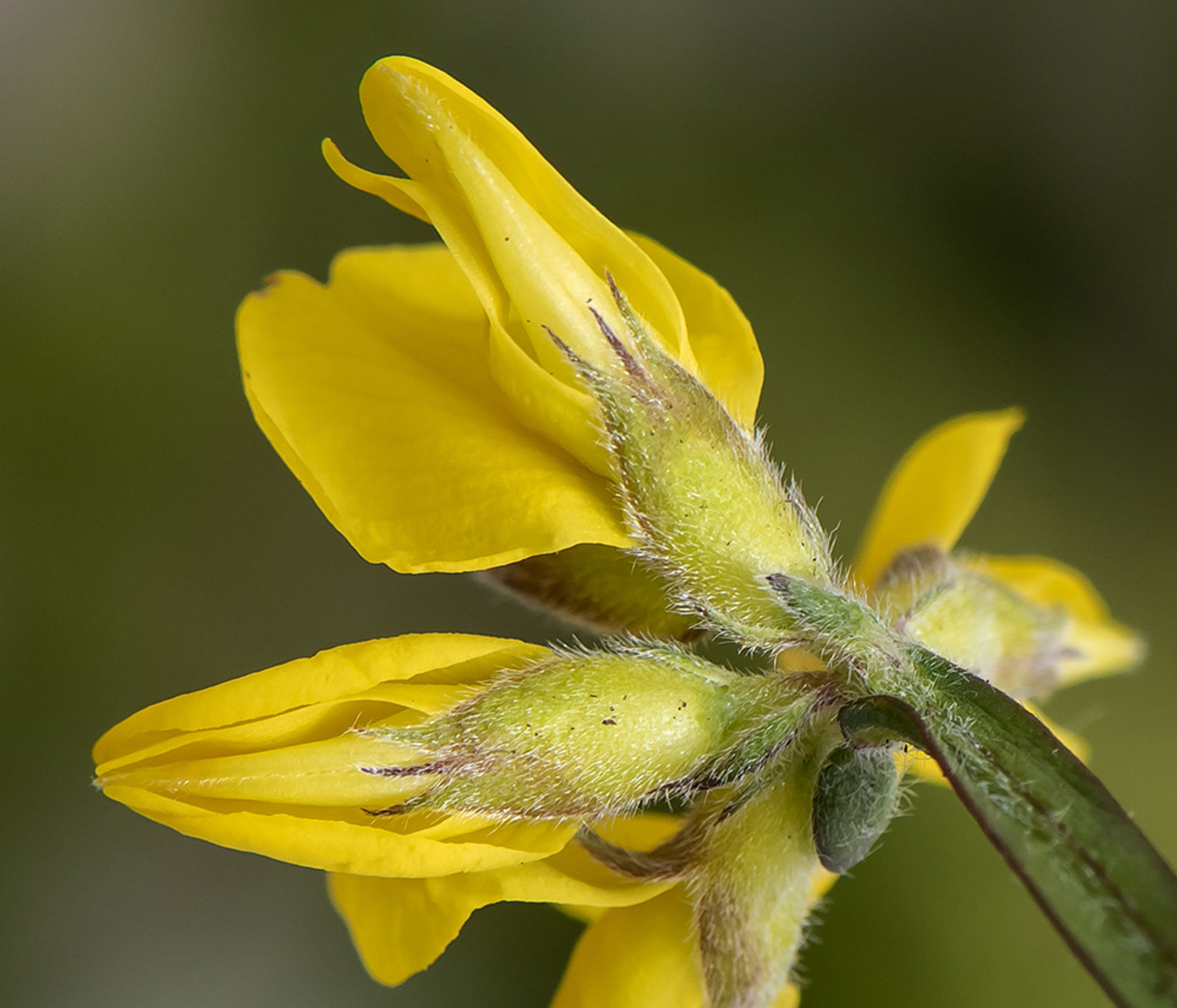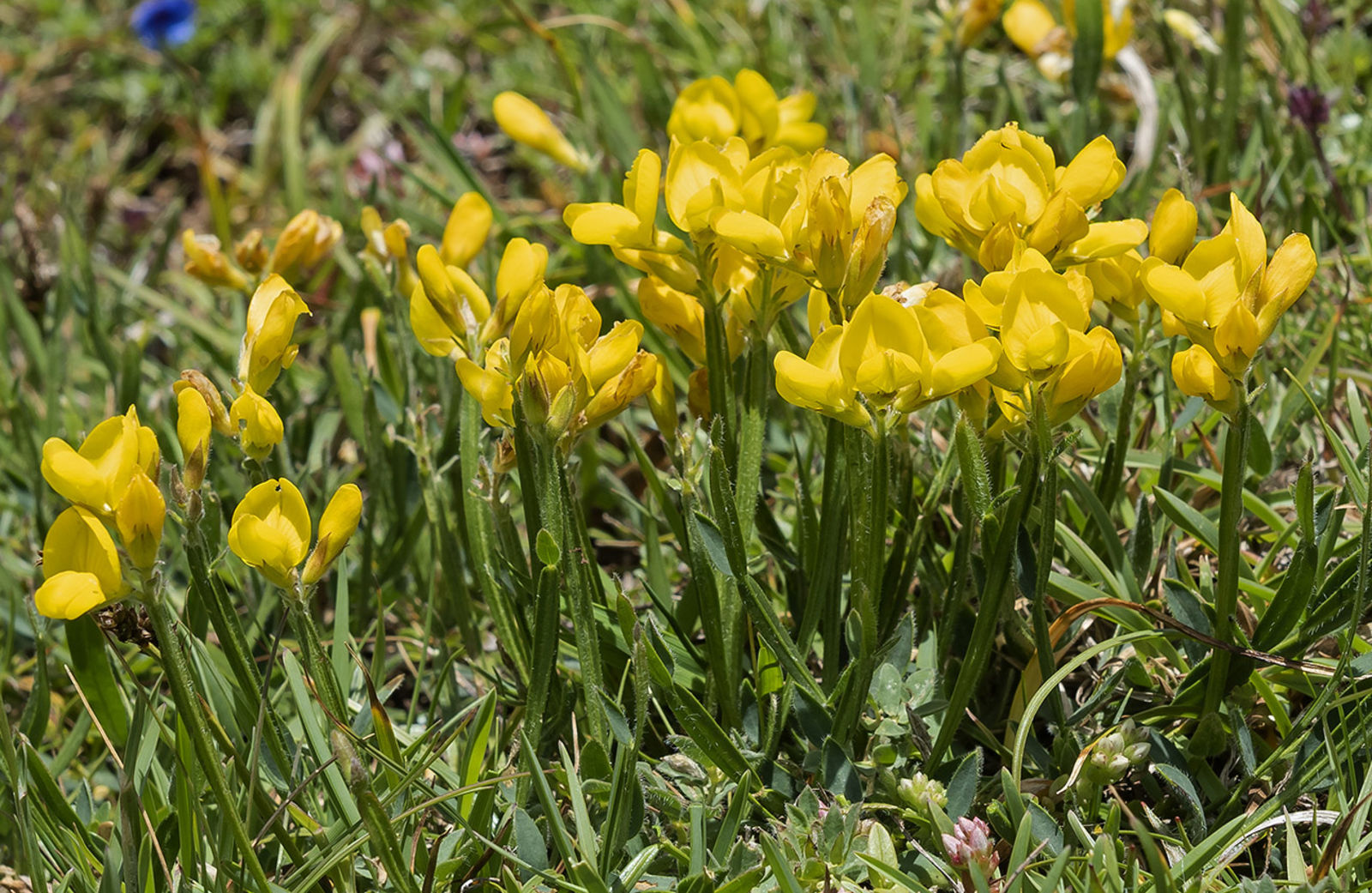Arrowleaf Broom
genista sagittalis
Also known as: ["St. John's Wort Broom","Arrowleaf Genista"]
Overview
A low-growing, deciduous shrub native to southern Europe, characterized by its arrow-shaped leaves and bright yellow flowers.
Benefits & Perks
["long-flowering","deer resistant","wildlife attractant (bees, butterflies, birds)","drought tolerant","rare/collector’s item"]
Botanical Classification
| Phylum: | Magnoliophyta |
| Class: | Magnoliopsida |
| Order: | Fabales |
| Family: | Fabaceae |
| Genus: | Genista |
| Botanical Name: | Genista sagittalis |
Plant Characteristics
Basic Information
- Category: Shrubs
- Suitable Location: rock gardens, sunny borders, or open meadows
- Suitable For:
- Is Weed: No
- Allergenicity: low
Environmental Needs
- Climate: {"temperatureRange":"–15–35°C"}
- Hardiness: {"zones":"5–8"}
- Misting: rarely required, only if ambient humidity is very low
- Drainage: Fast-draining.
- Soil Type: Well-draining, sandy, or loamy soil with low fertility.
Maintenance Level
- Maintenance Level: moderate
- Toughness Level: moderate
- Pruning Frequency: Annually, after flowering or in late winter/early spring.
- Pruning Intensity: Moderate; remove up to one-third of old growth if needed.
Care Details
Ideal Sunlight Coverage:
Full sun (6–8 hours/day). Tolerates partial shade but may become leggy.
Sunlight Tolerance Tips:
Acclimate gradually if moving from shade to sun; protect from intense midday sun in hot climates; ensure good air circulation to prevent fungal issues.
Care Requirements
Care Difficulty
moderatemoderate
Sunlight
full sun
Full sun is best; avoid deep shade; rotate plant for even growth.
Watering
every 7–10 days during active growth, reduce in winter
Water deeply but infrequently; avoid waterlogged soil; adjust based on season and weather.
Soil
well-drained, sandy or loamy soil
pH: Slightly acidic to neutral (pH 6.0–7.0).
Ensure excellent drainage; avoid heavy clay; use gritty mix for containers.
Temperature
Hardy in USDA zones 5–7. Prefers cool to moderate temperatures (50–75°F).
Protect from frost; avoid sudden temperature swings; adjust watering for heat.
Fertilizing
every 4–6 weeks during spring and summer
Fertilize once a year in spring; use a low-nitrogen formula; water before and after feeding.
Propagation
Methods
Stem cuttings or layering.
Step-by-Step Propagation Guide
- Take 4–6 inch cuttings.
- Remove lower leaves.
- Dip in hormone (optional).
- Plant in medium.
- Keep moist and warm.
Best Time: Late spring or early summer when new growth is firm.
Environment
Warm (65–75°F), high humidity, and bright indirect light.
Medium
Well-draining mix of peat and perlite or sand.
Hormone
Optional, but rooting hormone can improve success rates.
Timeline
Roots in 4–8 weeks; establish in 3–6 months.
Tools Needed
Pruners, rooting hormone, small pots, well-draining medium.
Quick Tips
Use healthy, non-flowering stems; keep consistently moist; provide bottom heat if possible.
Pruning & Repotting
Pruning Guide
Method
Cut back stems to healthy buds; thin out crowded areas; shape as desired.
Pruning Plan
Prune to maintain shape, encourage bushiness, and remove dead or weak growth.
Tools
Pruning shears, gloves, disinfectant.
Checklist
Disinfect tools; prune after flowering; remove dead wood; shape plant.
Repotting Guide
Best Season
Early spring before new growth begins.
Pot Size
Increase pot size by 2–3 inches if repotting is necessary.
Method
Use well-draining soil; ensure good drainage; gently tease out roots if pot-bound.
Suggestions
Generally not needed unless growing in containers. Outdoor plants thrive in situ.
Checklist
Check root health; use fresh soil; ensure drainage; water lightly after repotting.
Advanced Care Tips
Watering Mastery
Watering Checklist
Check soil moisture before watering; water deeply; ensure drainage; adjust for season.
How to Apply Water Properly
Water at the base of the plant, ensuring moisture reaches the root zone. Allow excess water to drain away completely. Water in the morning to reduce evaporation and fungal risk.
Watering Schedule Tips
Water sparingly, allowing soil to dry out between waterings. Reduce frequency in winter to prevent root rot.
Soil Improvement
Add sand or perlite to improve drainage; incorporate organic matter for structure.
Temperature Stress Management
Signs of Temperature Issues
Wilting, yellowing leaves, or stunted growth in extreme heat or cold.
Cold Stress
Leaves may turn brown or drop; growth may slow or stop in prolonged cold.
Solution: Mulch around the base in winter; protect from harsh winds; avoid overwatering.
Hot Stress
Leaves may scorch, wilt, or drop; flowering may be reduced.
Solution: Provide afternoon shade; increase watering; mist foliage during heatwaves.
Fertilizing Guide
Fertilizing Checklist
Use balanced fertilizer; apply in spring; avoid excess; water after application.
Fertilizing Method
Use a balanced, slow-release fertilizer in early spring. Avoid over-fertilizing, as Genista is not heavy feeder.
Common Problems & Solutions
Toxicity Warning
Cats
Slightly ToxicCats may experience mild gastrointestinal irritation and potential neurological effects if they consume parts of Genista sagittalis containing alkaloids.
⚠️ Symptoms:
🌿 Toxic Parts:
⚡ Toxic If:
if eaten
Dogs
Slightly ToxicIn dogs, ingestion of Genista sagittalis seeds and young shoots may lead to mild gastrointestinal upset and, in rare cases, mild neurological symptoms due to alkaloid content.
⚠️ Symptoms:
🌿 Toxic Parts:
⚡ Toxic If:
if eaten
Humans
Slightly ToxicGenista sagittalis contains alkaloids that can cause mild gastrointestinal distress and nervous system effects when ingested in significant quantities. The physiological impact is generally limited to temporary discomfort.
⚠️ Symptoms:
🌿 Toxic Parts:
⚡ Toxic If:
if eaten
Frequently Asked Questions
Q: Is Genista sagittalis toxic to pets?
A: It is mildly toxic to dogs and cats if ingested.
Q: Does this plant attract wildlife?
A: Yes, it attracts bees, butterflies, and birds with its flowers.
Q: How drought-tolerant is Genista sagittalis?
A: It is moderately drought-tolerant once established.
Quick Reference
| Family: | Fabaceae |
| Care: | moderate |
| Light: | full sun |
| Water: | every 7–10 days during activ |
Get Expert Care Tips
Download the Plantious app for personalized care reminders and plant identification!
Google Play App Store








